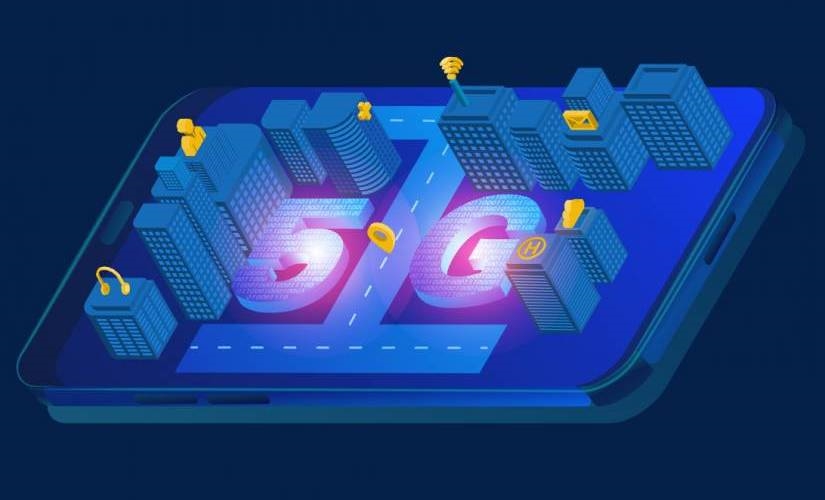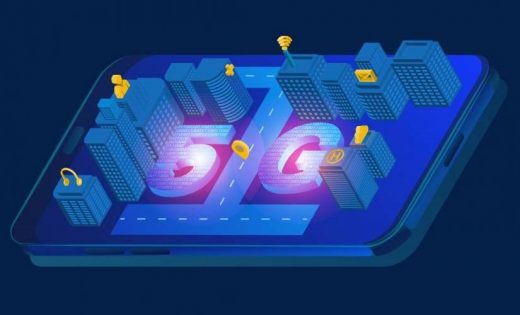5G Isn’t Pie in the Sky—It’s Here and We Need Infrastructure
5G Isn’t Pie in the Sky—It’s Here and We Need Infrastructure

The modern consumer might not remember life before fast internet speeds or the capacity to stream content from anywhere and use multiple internet-connected applications simultaneously. That’s because, to the look of the consumer’s naked eye, the switch from third-generation (3G) networks to fourth-generation (4G) networks was swift, and the speed has since become the standard. And now, the moment our connectivity is slow, we are outraged.
The connectivity slow-down is precisely why, when you think about the next generation of networking, it can feel pie in the sky.
We simply don’t know what we’re missing. But if I took your 4G away and you were forced to revert back into a 3G world, your internet access would be slow and less secure. Many of today’s existing technologies, that depend on fast internet speed, would be non-functional.
When the world moved from 3G to 4G—and many geodes are still making the switch today—it wasn’t an instant return on investment.
Revenues were tepid, especially considering the upfront cost of building the infrastructure to support it. In fact in some regions, including Europe and Latin America, revenues even dropped after 4G’s introduction, according to McKinsey.
Are the underlying thinking and lack of instant return why we’re not sprinting toward 5G? Are we still stuck trying to find the value of 4G? I’d argue that at this point, the lack of a paced and quick move to 5G will leave us technologically vulnerable.
Next-generation networks provide immense return on investment for telecommunications players and society at large.
5G will not only make businesses more efficient but change how society operates altogether. All of our advancements in technology—including autonomous driving, connected smart homes and communities, and even healthcare technology—depend on even faster, wire-free internet speeds.
5G is revolutionary and unbelievably substantial, but the toughest part is believing that it will maximize humanity’s potential event if we don’t know precisely what it will look like yet. So what can we do to pave the way for 5G and to embrace all the societal benefits and innovation that it can bring?
Embracing the revolution
5G is going to cost us. According to McKinsey’s “The Road to 5G” report, infrastructure requirements for 5G can be generally grouped into three categories: enhanced mobile broadband, IoT, and mission-critical applications. In each of these cases, network performance must increase 10-fold as measured by latency, throughput, reliability, and scale.
Network providers and enterprise businesses care about getting a certain amount of 5G coverage in the next few years, but in reality, there’s not enough available manufacturing to go around. For example, China Mobile has nearly 2 million network towers.
To convert to 5G, the country would need at least eight times the infrastructure.
It helps to remember that it takes eight times more infrastructure to support the technology in 5G that requires antennas and towers to be even closer to users. While the U.S. and other countries need just a fraction of this infrastructure, we all need it quickly.
There’s a huge opportunity for us to innovate as far as manufacturing is concerned. Huawei—despite all its controversy and lack of security—was perceived as ahead in the 5G race. Its speed to innovate and get a product to market quickly was the motivation.
But if we’re talking about 5G kickstarting the fourth industrial revolution—which will change life as we know it—we have to rethink our approach to get a seat at the table. At one point in time, the “United States was home to a vibrant ecosystem of American companies that formerly went toe-to-toe with the likes of Nokia and Ericsson,” as Brian Fung wrote in his Washington Post piece.
Is it time for the U.S. to jump back into the manufacturing game?
Perhaps, but at a minimum, we must look for ways to unlock the door to innovation, new supplier partnerships, and new ways of thinking about infrastructure. If we want to uphold our position as a technology leader, this is our ticket. Alternatively, we put ourselves at risk of being left out of the 5G race and being a leader in the fourth industrial revolution, altogether.
In reality, U.S. providers seem to be staggering the retirement of 2G, 3G, and 4G networks.
Consumers see a slower, phased approach for 5G. AT&T, for example, shows “5GE” or “5G evolution,” which actually leverages a 4G standard even though it can deliver faster speeds.
Make no mistake, AT&T is actively rolling out full 5G while they start to transition the consumer mindset with an interim technology for most users.
In a nutshell, this seems to be the most natural path for operators because it keeps investment costs low while the revenue potential of a new grandeur network is still relatively unknown. In reality, this means the telecommunications providers in the U.S. — and the vast majority of the rest of the world — seem to be racing each other.
Shouldn’t they —instead— be holding hands to create real innovation?
We’re playing it safe for the sake of competition instead of working together to create the future we all want. So where do we go from here? Huge potential lies in critical partnerships and creating new pathways for ‘sharing,’ such as network sharing.
Collaboration is mission-critical to the future of 5G because it will give us the runway to experiment quickly and take a fast-paced approach to develop the technology.
Sprint and T-Mobile, for example, own significant high-frequency spectrum millimeter-wave frequency, which 5G allows standardized use. A considerable amount of low-frequency bandwidth in the 600MHz ranges enable the towers to penetrate buildings and go long distances.
Recently, the Sprint and T-Mobile merger was officially approved by the U.S. Federal Communications Commission and Department of Justice. However, it still faces opposition at the state level and requires a trial scheduled for December to work out the details.
When the merger moves forward, the capabilities of their combined 5G infrastructure and services will ensure the U.S. takes drastic steps toward advancing our place in the 5G race.
Until then, T-Mobile plans to launch in the 600MHz spectrum, potentially covering 200 million Americans with fast wireless speed. The launch would be a great start but again will fall short of the intent of 5G as a complete standard.
5G is a catalyst for future innovation.
The U.S. has been a leader in other life-altering catalysts, from the Internet to mobile devices. It’s a miss if we aren’t leading 5G. We must remain open to working together and accepting new ideas, partnerships, and ways of thinking.
5G will allow the data universe to expand, and we can’t even begin to think of all the possibilities. It will be a miss for everyone if we remain so dependent on others to lead the way.
The post 5G Isn’t Pie in the Sky—It’s Here and We Need Infrastructure appeared first on ReadWrite.
(15)


